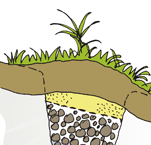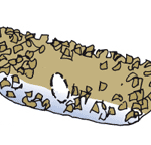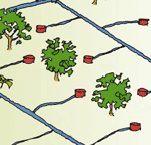Water
Water use, sustainability, and efficiency by choosing quality systems and materials, and providing environmentally friendly solutions.
Irrigating with greywater
When using greywater for irrigation, it’s important to comply with local authority requirements and to ensure that the greywater is used safely.
On this page:
- local authority restrictions
- safety and health
- distribution systems
Local authority restrictions
Check with the local authority for restrictions on greywater use such as:
- minimum distance of discharge from boundaries, waterways, wells and bores, and sea
- maximum allowed daily discharge rate.
Safety and health
Greywater that has not been disinfected will contain bacteria. Greywater may also contain chemicals from cleaning products, detergents and bleaches that can contaminate the soil and kill plants. If using greywater for irrigation, avoid:
- harsh detergents, softeners and whiteners
- bleach or cleaners with chlorine
- cleaners containing boron.
Minimise any health risks:
- Do not allow greywater to pond.
- Do not spray, as this creates aerosol droplets that can drift.
- Discharge greywater below the soil surface.
- Do not use for vegetables – it is suitable for shrubs, flowers and fruit trees only.
- Do not irrigate near children’s play equipment or play areas.
- Do not irrigate plants that prefer acidic conditions.
Distribution systems
A greywater distribution system should incorporate a distribution box and branched drain network, so that water can be diverted to different parts of the dispersal area, to allow each area to rest.

- Subsoil gravity-fed irrigation trench
These are filled with large aggregate metal and rely on absorption and/or transpiration, or in areas of good soil permeability, mulch.

- Mulch-filled swale irrigation
Mulch-filled swales are channels filled with pine bark mulch. Water is discharged through small diameter slotted pipes. The mulch prevents physical contact with the water.

- Proprietary greywater irrigation system
There are several manufactured systems available, typically using a pump to distribute water.

